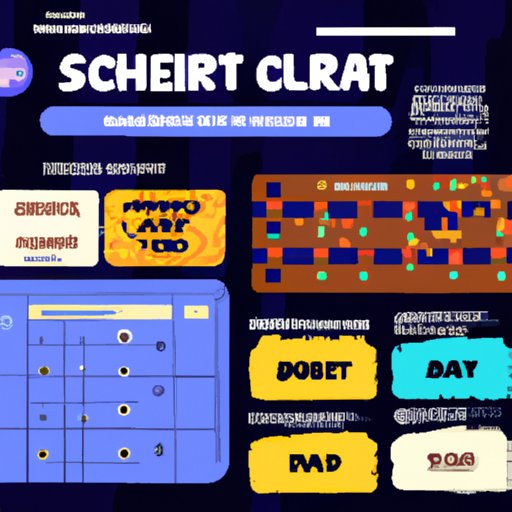
Introduction
Scratch is a free programming language and online community developed by the MIT Media Lab. It’s the perfect tool for beginners of all ages, as it allows you to create games, animations, and interactive stories by adding visual code blocks. It’s easy to use and fun to learn, making it an excellent platform for designing your very own platformer game. In this article, we’re going to guide you through the process of creating a platformer game on Scratch.
Step-by-Step Guide
Before diving into creating a game, you’ll need to get familiar with the Scratch platform. It’s a web-based application, so you won’t need to install anything on your computer. However, you’ll need to create an account or sign in if you already have one. Once you log in, you’ll be directed to the programming environment where you can begin designing your game.
Let’s get started with the step-by-step guide to build your own platformer game on Scratch.
Designing the Background and Characters
The first step is to create the background and characters. The background is the environment in which the gameplay takes place. You can either choose one from the Scratch library or create your own by importing one.
To create a character, you can use the Scratch sprite editor to draw your own character or choose from the Scratch library. Once you have created your characters, you can add them to the background.
Coding Techniques
Now that you’ve created your background and characters, let’s explore coding techniques. The following steps will help you code various game components.
Creating Platforms
To create platforms, you’ll need to add a new sprite and then select the “new script” option. Select “Events” and then choose “when flag clicked.” After that, you’ll need to drag and drop “set position” and “clear” from Motion and Control, respectively. Then, you’ll need to create the platform by selecting “Looks” and “change color effect” and then selecting “ghost.”
Creating Enemies
To create an enemy, add a new sprite and select “new script.” Then select “Events” and “when flag clicked.” Then you’ll need to drag and drop “set position,” “say,” and “forever” from Motion and Control, respectively. Then, you’ll add the actions that would define the enemy character’s movements.
Character Movement
Character movement is the most crucial aspect of a platformer game. To create character movements, you’ll need to select the sprite and add a new script. Then, you’ll need to select “Events” and “when the flag is clicked.” You’ll then add various blocks such as “move,” “turn,” etc., from the motion menu.
Video Tutorial
Video tutorials are an excellent way to help beginners learn advanced coding techniques. You can find various tutorials on Scratch Studio or on YouTube. These videos walk you through the process and allow you to follow along at your own pace. follow
Showcase Top Platformer Games on Scratch
Scratch has countless platformer games, and it can be challenging to figure out which ones are worth your time. Here we list down some of the best Scratch platformer games-
Cave Scramble
By Ohbot
Super Mario Bros. Scratch Edition
By Griffpatch
The Adventurous Adventures of Microcristo
By Hinds_Sights
Features That Can Make Your Platformer Unique
To make your platformer unique, you can add various features like special moves, collectible items, power-ups, etc. You can also create different types of enemies that challenge the player and use multiple characters to switch between them in the game.
Creating Challenging Levels
Level design is an essential part of a platformer game. You’ll need to create a set of obstacles that increase in difficulty as the game progresses. To make these levels more challenging, you can use different enemies, platforms, and other objects. As a result, the player will have to utilize different skills to progress through the game.
Creating a Story
Adding a story to your game can make it more engaging and exciting for the player. Scratch offers built-in functionality to create dialogue boxes and character interactions. For example, you can create conversations between two characters or add an intro or outro to the game.
Enhancing Your Platformer with Music and Sounds
Music and sounds are essential components of gaming. They create an immersive environment and enhance the player’s experience. You can use Scratch’s sound libraries to choose from a range of sounds or create custom soundtracks to make your game stand out.
Conclusion
Creating a platformer game on Scratch is a fun and rewarding experience. With the help of this guide, you’ll be able to design a unique and exciting game. By implementing the tips and techniques discussed in this article, you can make your game more engaging and challenging for your audience.





